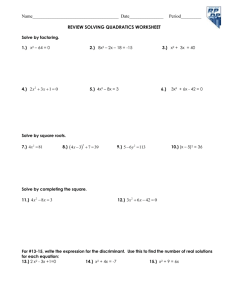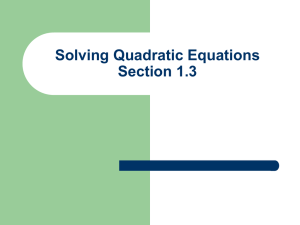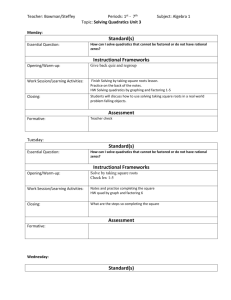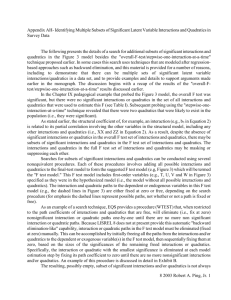Solving, Graphing, and Factoring Quadratics
advertisement
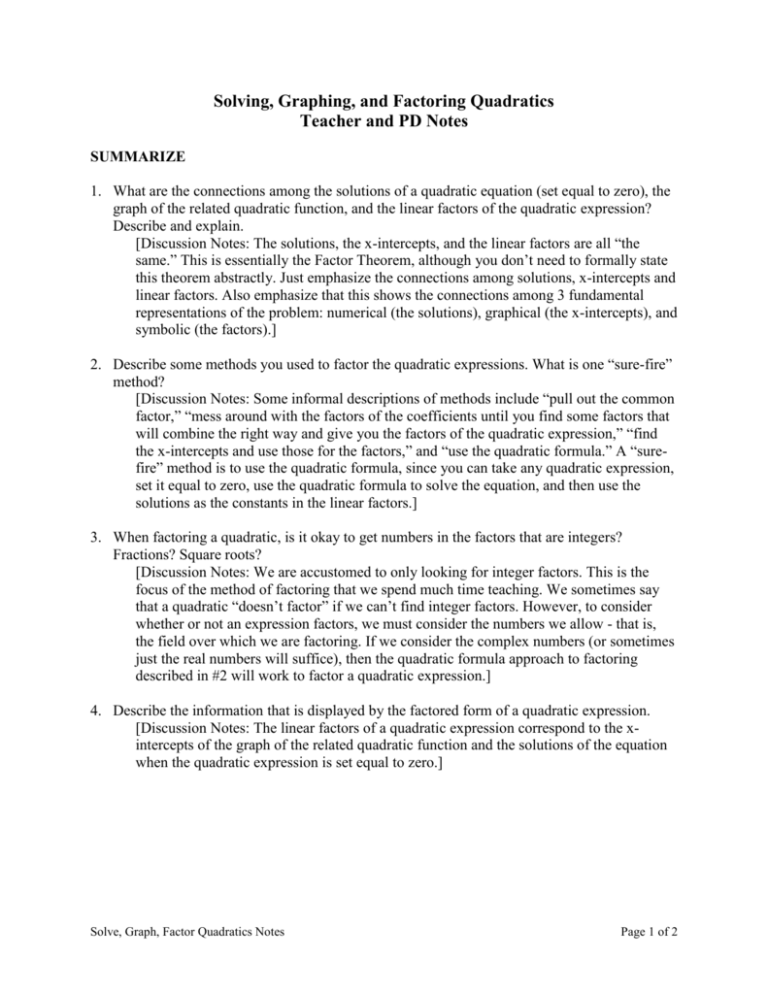
Solving, Graphing, and Factoring Quadratics Teacher and PD Notes SUMMARIZE 1. What are the connections among the solutions of a quadratic equation (set equal to zero), the graph of the related quadratic function, and the linear factors of the quadratic expression? Describe and explain. [Discussion Notes: The solutions, the x-intercepts, and the linear factors are all “the same.” This is essentially the Factor Theorem, although you don’t need to formally state this theorem abstractly. Just emphasize the connections among solutions, x-intercepts and linear factors. Also emphasize that this shows the connections among 3 fundamental representations of the problem: numerical (the solutions), graphical (the x-intercepts), and symbolic (the factors).] 2. Describe some methods you used to factor the quadratic expressions. What is one “sure-fire” method? [Discussion Notes: Some informal descriptions of methods include “pull out the common factor,” “mess around with the factors of the coefficients until you find some factors that will combine the right way and give you the factors of the quadratic expression,” “find the x-intercepts and use those for the factors,” and “use the quadratic formula.” A “surefire” method is to use the quadratic formula, since you can take any quadratic expression, set it equal to zero, use the quadratic formula to solve the equation, and then use the solutions as the constants in the linear factors.] 3. When factoring a quadratic, is it okay to get numbers in the factors that are integers? Fractions? Square roots? [Discussion Notes: We are accustomed to only looking for integer factors. This is the focus of the method of factoring that we spend much time teaching. We sometimes say that a quadratic “doesn’t factor” if we can’t find integer factors. However, to consider whether or not an expression factors, we must consider the numbers we allow - that is, the field over which we are factoring. If we consider the complex numbers (or sometimes just the real numbers will suffice), then the quadratic formula approach to factoring described in #2 will work to factor a quadratic expression.] 4. Describe the information that is displayed by the factored form of a quadratic expression. [Discussion Notes: The linear factors of a quadratic expression correspond to the xintercepts of the graph of the related quadratic function and the solutions of the equation when the quadratic expression is set equal to zero.] Solve, Graph, Factor Quadratics Notes Page 1 of 2 Reflection and Connection Questions: How are the following topics and ideas connected to or addressed by the task on “Solving, Graphing, and Factoring Quadratics?” Algebraic expressions Equations Functions Multiple connected representations A “functions-based approach to teaching algebra” Related Tasks “Mystery Quadratic” is a possible related meaningful distributed practice task. “Functions and Fund Raising” is a task that involves factoring and solving quadratics using functions, mathematical modeling, and problem solving. “A Recursive View of Skydiving” is a task that takes a recursive look at quadratics. “How Many Quadratics Factor” is a PD task that examines how many random quadratics are actually factorable over the integers. “Which Quadratics to Factor” is a PD task that examines the question: How complicated an expression should students be able to factor? “Some Comments on Factoring” prompts discussion about the process of factoring, the factored form, and prime quadratics. Solve, Graph, Factor Quadratics Notes Page 2 of 2


